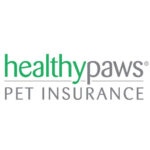Best Pet Insurance For Yorkshire Terriers In 2025
In my expert assessment, Healthy Paws delivers the premier pet insurance option for Yorkshire Terriers.
We’ve saved shoppers an average of $350 per year on their pet insurance.
If you own a Yorkshire Terrier, you’re likely concerned about their health and wellness. Purebred Yorkshire Terriers are more prone to genetic issues than mixed-breed dogs. Sadly, 4 out of 5 pet owners struggle to cover an unexpected $500 vet bill on their own. Pet insurance can help ease that financial stress.
In this review, we’ll go over some of the top pet insurance options for Yorkshire Terriers owners and help you select the right plan. Pet insurance, much like personal health insurance, offers better treatment options and reduces out-of-pocket costs. The difference is that it’s far more affordable than private health insurance.
Best Pet Insurance Companies For Yorkshire Terriers, 2025
Multiple pet insurance companies offer similar services for Yorkshire Terriers, focusing on pet health and financial security, yet each has distinct advantages. The best choice for one Yorkshire Terriers might not be the same for another.
Here’s our breakdown of the leading pet insurers for Yorkshire Terriers.



Comparison Of The Best Pet Insurance Companies For Yorkshire Terriers
Our evaluation of pet insurance choices for Yorkshire Terriers reveals a range of strengths across different providers.
| Overall Rating | Best For | Waiting Period | Reimbursement % | Benefit Limit | Get A Quote | |
|---|---|---|---|---|---|---|
| Healthy Paws |
|
Overall |
15 days accidents/illness |
70%, 80%, 90% |
Unlimited annual and lifetime |
Instant Quote |
| Lemonade |
|
Cheap |
2 days accidents, 14 days illness |
70%, 80%, 90% |
$5,000 to $100,000 annually |
Instant Quote |
| ManyPets |
|
Puppies |
15 days accidents/illness |
70% or 80% |
Unlimited annual and lifetime |
Instant Quote |
| Pumpkin |
|
Older Dogs |
14 days accidents/illness |
90% |
$10,000, $20,000 or unlimited |
Instant Quote |
| Spot |
|
Multiple Pets |
14 days accidents/illness |
70%, 80%, 90% |
$2,500 to unlimited |
Instant Quote |
Our Methodology
Reviews and subsequent ratings were determined by studying the websites of each insurer, customer feedback, reviews from other platforms, and personal experiences with pet insurance.
Quotes Analyzed
Years Of Industry Experience
Brands Reviewed
Research Hours
Detailed Reviews Of The Best Yorkshire Terrier Insurance Companies
Best Overall
Key Statistics
Why We Like Them
⇅Healthy Paws is highly regarded for pet insurance because it offers unlimited claim payouts and doesn’t impose per-incident maximums or caps. This ensures you won’t have to worry about financial constraints affecting your pet’s care. Their policy is straightforward, without costly extras, and they allow you to visit any licensed veterinarian. Claims can be easily submitted through their app or website, typically processed within a quick two-day timeframe.
Benefits & Drawbacks
⇅- There are no maximums for annual or lifetime payouts.
- You have 30 days to get your money back.
- We aim to complete processing for most claims within two days.
- Direct payments to the veterinarian are potentially available. ✓
- Regular health maintenance isn't provided. ✘
Runner-Up For Best Overall
Key Statistics
Why We Like Them
⇅Lemonade was found to be the most economical choice for pet insurance for Yorkshire Terrier. Unlike Healthy Paws, Lemonade offers coverage limits ranging from $5,000 to $100,000 per year, with premiums increasing based on the selected limit. Their standard policy includes coverage for accidents, illnesses like cancer and heart disease, common issues such as broken bones, and hip dysplasia in older Yorkshire Terrier. However, they do not cover preexisting conditions, dental problems, behavioral issues, or elective procedures, which is typical for most insurers.
Benefits & Drawbacks
⇅- Decide on an optional wellness plan.
- You're covered for accidents after waiting only two days.
- Bundle pet insurance with Lemonade's home, renters, or car insurance and receive a 10% discount. ✓
- Pet telehealth consultations are not available 24/7.
- Including vet appointment fees will cost you more.
- This insurance does not pay for prescription food or microchipping. ✘
Best For Puppies
Key Statistics
Why We Like Them
⇅ManyPets offers extensive insurance coverage tailored for puppies. Rates remain unchanged by pre-existing conditions, and treated illnesses could be covered after 18 months, with unrelated conditions still eligible for insurance. Young Yorkshire Terrier, like other puppies, may experience illnesses such as poisoning, ingesting foreign objects, and accidents due to their youthful energy. Insuring them early decreases the likelihood of exclusions for pre-existing conditions in the future.
Benefits & Drawbacks
⇅- Offered in more than 40 states
- Handles expenses for vet visits due to illness and accidents.
- Features discretionary wellness schemes. ✓
- A pet telehealth line that operates every hour of every day is not provided.
- Behavioral therapy for pets isn't covered.
- Alternative therapies are not part of the covered services. ✘
Best For Older Dogs
Key Statistics
Why We Like Them
⇅As Yorkshire Terrier get older, they face genetic illnesses such as cruciate ligament issues and hip dysplasia that can lead to costly treatments. Pumpkin pet insurance doesn’t have specific waiting periods for these conditions and covers vet exam costs for treating older Yorkshire Terrier. They offer a wide range of coverage options for common Yorkshire Terrier health problems, including surgeries and dental issues, with a choice of three deductibles and a standard reimbursement rate of 90%.
Benefits & Drawbacks
⇅- Opt-in for optional wellness benefits
- Special offers for insuring two or more pets.
- Pets 8 weeks and older are eligible for a 90% reimbursement. ✓
- No pet telehealth support is offered at all hours.
- There isn't a plan focused solely on accidents. ✘
Best For Multiple Pets
Key Statistics
Why We Like Them
⇅Owners of Yorkshire Terrier often have more than one pet due to the breed’s friendly demeanor. Spot offers a 10% discount for insuring multiple pets, resulting in significant savings. Their optional preventive care plan includes wellness services like an annual vet visit, fecal test, and teeth cleaning, with coverage for certain vaccinations. Spot guarantees a 30-day money-back option if you’re not satisfied with their coverage or service. They also reimburse up to 90% of eligible vet bills and provide a 24/7 vet helpline. Additionally, you can choose any U.S.-licensed veterinarian or specialist.
Benefits & Drawbacks
⇅- Involves microchip application
- A deductible starting from $100 is offered.
- Access pet telehealth services anytime with their 24/7 line. ✓
- Accident claims come with a 14-day waiting period, unlike some main competitors who manage it in just 2 days. ✘
Average Cost Of Pet Insurance For Yorkshire Terriers
| Company | Deductible | Annual Reimbursement % | Monthly Price | Age of Dog |
| Healthy Paws | $500 | 70% | $70.30 | 5 year old |
| Lemonade | $500 | 70% | $40.00 | 5 year old |
| Spot | $500 | 70% | $73.34 | 5 year old |
| Healthy Paws | $500 | 80% | $36.52 | 1 year old |
| Lemonade | $500 | 80% | $20.67 | 1 year old |
| Spot | $500 | 80% | $53.80 | 1 year old |
| Healthy Paws | $500 | 70% | $37.64 | 3 month old |
| Lemonade | $500 | 70% | $29.13 | 3 month old |
| Spot | $500 | 70% | $83.12 | 3 month old |
Common Health Issues For Yorkshire Terriers
Yorkshire Terrier, as a purebred breed, are more prone to health problems. Unfortunately, some breeders have failed to prioritize genetics when breeding Yorkshire Terriers, leading to the spread of various health issues within the breed. As a result, Yorkshire Terriers are more likely to experience genetic problems than other breeds.
Here are a few of the common health concerns for Yorkshire Terriers:
- Patellar Luxation
- Dental Issues
- Tracheal Collapse
- Portosystemic Shunt (Liver Shunt)
- Hypoglycemia
- Legg-Calve-Perthes Disease
Average Cost Of Typical Vet Procedures
| Typical Vet Procedure | Average Cost Of Procedure |
| Puppy vaccinations | $75-100 |
| Flea & tick prevention | $40-200 |
| Heartworm prevention | $24-120 |
| Spay or neuter surgery | $200-800 |
| Annual exam | $240-600 |
| Teeth cleaning | $200-500 |
| Microchip | $40 |
Average Cost Of Emergency Vet Procedures
| Emergency Pet Procedure | Average Cost Of Procedure |
| General consultation/exam | $100-$150 |
| General bloodwork | $80-200 |
| X-rays | $150-$250 |
| Ultrasound | $300-$600 |
| 1-2 day hospitalization | $600-$1,700 |
| 3-5 day hospitalization | $1,500-$3,500 |
| Wound treatment & repair | $800-$1,500 |
| Emergency surgery | $800-$2,500 |
| Oxygen therapy | $500 |
Is Pet Insurance Worth It For Yorkshire Terriers?
Pet insurance is designed to help with unexpected vet costs. Most pet owners pay for their pet’s medical care directly, but many people can’t afford a $1,500 emergency vet bill. Having the right insurance can be a real lifesaver. It lets you focus on your pet’s well-being rather than financial stress. The value you get from pet insurance depends on your expectations. If you’re hoping to cover expenses from a chronic condition, you might be disappointed since no company covers preexisting issues. However, with a policy that suits your needs and budget, you’ll likely see the benefit.
How To Find The Best Pet Insurance Company For You
Pet insurance plans vary in terms of cost and options across different companies, making the selection process daunting. Before applying for coverage, consider these tips to find the right plan for your pet.
Check Whether Your Pet Is Eligible
Insurance companies often require puppies and kittens to be between 6 and 10 weeks old for coverage. Senior pets may not qualify for initial enrollment or may only be covered for accidents. However, once enrolled, most plans offer lifelong coverage provided premiums are paid.
Research What’s Covered
Most pet insurance plans cover surgery, hospitalization, and medications if your pet gets injured or sick. However, some items may come with extra costs or not be covered at all. For example:
- Exam fees: If your dog breaks her leg, the policy may cover surgery but not the vet’s exam fee.
- Alternative therapies: Acupuncture or physical therapy may be covered by some insurers but cost extra with others.
- Behavioral treatment: Not all plans cover therapy for behavioral issues.
- Prescription food: Some plans don’t cover special diets, even if prescribed.
- Dental care: Dental coverage varies. Your plan might not cover conditions like gingivitis unless your pet had a recent cleaning, but wellness add-ons could pay for cleanings.
Most plans also exclude pre-existing conditions, cosmetic work, and breeding expenses.
Decide How Much Coverage You Want
Pet insurance plans often cap annual payouts, although some offer unlimited coverage. It’s your choice how much coverage gives you peace of mind for vet bills. With a healthy pet, you might only need to pay for routine care for years. But unexpected surgeries or serious illnesses could mean thousands of dollars in expenses.
Understand Reimbursements And Deductibles
Pet insurance plans typically reimburse a set percentage of your vet bill, with 70%, 80%, or 90% options available.
Some plans instead pay a fixed fee for treatments, which could be less than your vet charges, and you’d be responsible for covering the difference.
Most policies include a deductible, which is the out-of-pocket amount you pay before your coverage starts. Deductibles generally range from $100 to $250 or higher. Some policies require you to pay a deductible per incident, while others have an annual deductible.
Choosing a lower deductible and higher reimbursement rate generally increases premiums, while a higher deductible and lower reimbursement rate can reduce your premium.
Check Waiting Periods
Insurance plans typically require a short waiting period, often around 14 days after purchase, before they begin covering general accident and illness treatments. During this period, medical expenses are not reimbursed. Some plans have extended waiting periods for specific conditions like cruciate ligament injuries, which are prevalent in dogs as orthopedic problems. Cruciate ligaments play a critical role in stabilizing the knee joint, and injury to them can severely affect a dog’s ability to walk.
Examine Extra Costs
Certain pet insurance providers cover routine services like vet check-ups and vaccinations. Before enrolling, calculate if the higher cost is justified by comparing the annual premium of the wellness plan with your average yearly expenses for these services. Remember to review the specifics, as “wellness” coverage can differ between insurers.
Compare Quotes
The cost of pet insurance changes depending on the insurer and the level of coverage you opt for. Some pet insurance providers offer discounts, like savings for covering multiple pets. However, a discount doesn’t guarantee it’s the best option. To find the right pet insurance, compare quotes from various plans with similar coverage amounts, deductibles, and reimbursement limits.
Factors That Impact Cost Of Your Pet Insurance Policy
Just like with health insurance, several factors can affect the cost of your pet insurance:
- Location. Vet care costs in your area can increase or decrease your premium.
- Age of your pet. Older pets usually come with higher premiums due to their greater risk of health issues.
- Breed. Certain breeds are more prone to specific conditions. Bulldogs and Boston terriers often have breathing difficulties, and large breeds like German Shepherds are at higher risk of hip dysplasia. These risks are factored into your plan.
- Deductibles and coverage options. If you choose a lower deductible, your premiums will be higher, as the plan will cover more of your pet’s costs earlier on.
FAQs
Is pet insurance cheaper for purebred dogs?
Insurance premiums for purebred dogs are usually higher because they are more susceptible to genetic health conditions compared to mixed-breed dogs.
What is the average cost of owning a Yorkshire Terrier?
Vaccinations, food, grooming, and insurance total about $3,000 in the first year, reducing to approximately $1,900 annually thereafter.
What insurance do you need for a dog?
Pet insurance is essential for dog owners to manage veterinary expenses and ensure their dog’s wellness.
Sources
⇅